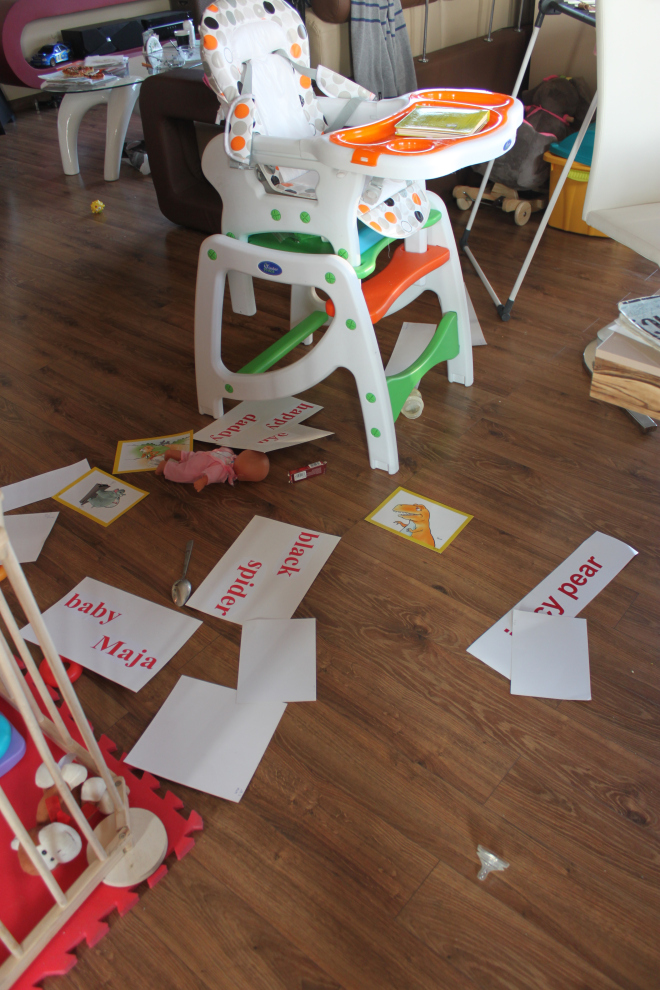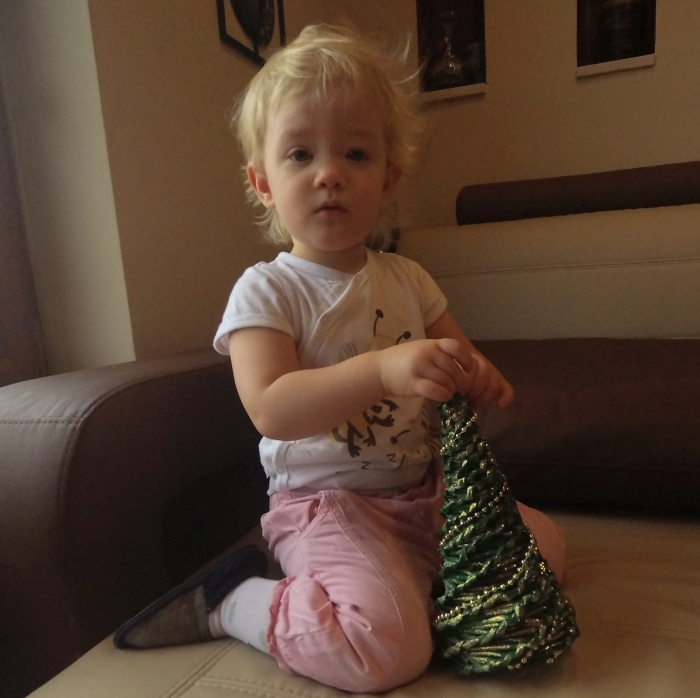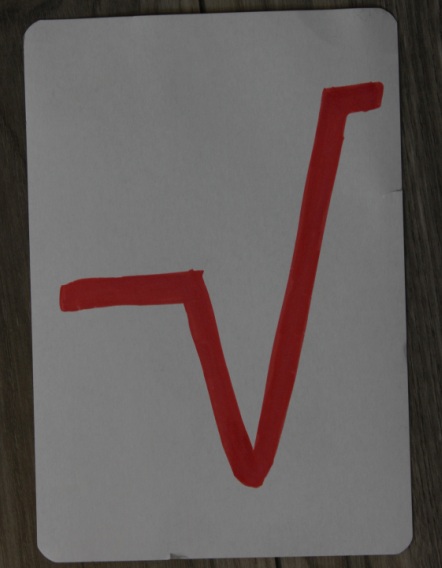
LEARNING THROUGH PLAY WITH THE DOMAN METHOD
I have read three books by Glenn Doman and I can summarize his method this way: we show 5 word cards as quickly as possible and we praise a child loudly expressing a sincere joy while doing this. This is what one session looks like. It doesn’t matter if we have 5 reading cards or maths cards or bits of intelligence cards for developing encyclopedic knowledge.
Doman doesn’t say anything about any particular games or about any other way than just standard presenting the cards when it comes to showing new material. For him these quick presentations are fun for a child. They are like games. The only variation he mentions is when showing the word cards with verbs and colours. In this case each action can be demonstrated after the card is shown. In case of the word cards with colours we can show a given colour at the back of the card. Of course we need to prepare the cards for this i.e. paint something at the back of each.
DOES IT WORK?
It usually depends on the day or on the time of the day. I always try to present the cards as quickly as possible but it sometimes happens that our baby purposefully looks away. Fortunately, it doesn’t happen very often. On other occasions, I manage to catch her attention easily and after a few seconds, our “lesson” with 5 cards is over. I often have the impression that she is more interested in maths than in reading. Well…are red dots more attractive?
THE DOMAN METHOD MODIFIED
The main change is introducing two languages almost simultaneously in the reading programme. I have already mentioned that I have decided to raise my child bilingually. It’s an intentional bilingualism because I am not a native speaker of English. We live in Poland and everybody speaks Polish but I speak English only when I speak to Maja.
Some time ago I came to conclusion that I need to be creative, more creative than Doman was and it helps a lot. At times, our “lessons” look exactly as Doman suggests. At times, I deem it necessary to invent various games with cards. All ideas come to me spontaneously, at a given moment. I repeat those which make Maja laugh. I don’t need to be creative at all when showing picture flashcards. After each session I kiss and praise Maja as much as I can.
You need to accept the mess and the fact that it sometimes happens that a baby, for example, tears one of the cards. When you put your spontaneous ideas into practice it is not possible to predict what will happen. Remember that the cards are not precious. Stimulating your child’s curiosity and expanding his or her knowledge is much more important.
Bear in mind that every kid is different and my ideas won’t always work. However, I think it is worth trying them. The global reading programme doesn’t have to be based on quick card presentations only. Add an element of fun to the Doman method. Modify my ideas and be creative inventing your own ones. I am convinced every parent knows how to have fun with his or her baby.
And remember to that you succeed every time your baby looks at a card for 1 second! However, we need to make sure this eye contact with the card happens. You succeed twice if you manage to make your child laugh while playing with the cards.
These are our games:
- I show Maja a card and I give it to her. Then, I hit the card as hard as I can to make it fall out of Maja’s hand. The card falls on the floor. My baby is quite strong so sometimes I have to hit a card more than once to make it fall down. She laughed a lot when I did it for the first time. We had more sessions at once because although normally you show just 5 cards at one session. I think if a child wants more, you can show more cards and my child clearly wanted more. The main picture for this post shows our living room after this game. We played it in Maja’s high chair.
- I present a card and give it to Maja. She is at the top of the stairs and throws it down. She looks curiously to see where it will land.
- I give a card to Maja and she gives it to daddy. We used to play this game until she tore out the card (it’s been already fixed).
- When she is on the sofa, I put one of the cards where she climbs and she makes it fall down. Another version of this game: I raise Maja a little and she can take the card from the sofa and throw it on the floor. She looks where it lands like in our game on the stairs.
- I do a similar thing in our bedroom, on our bed. There is a cranny between our bed and the wall so when she touches the card it falls down and completely disappears. It must be magic for her.
- Following her fascination with lights, I put the light under the card. I use my mobile flashlight and I move it while reading. She looks fascinated.
- I pin the card with a big hairclip on the other side of her playpen. Maja is interested in the hair clip and she wants to take it so she starts coming towards the and the card looking at it. Before she comes there, I manage to show her all 5 cards. Of course, she gets the hair clip at the end.
- I hide different things under the cards and let her discover them. I read what it says on the cards immediately when she looks at them.
- After we do our session successfully, I give her a crayon and let her doodle on the back of one card.
- I have also noticed that she is sometimes more focused if somebody else, not me, reads the text. Therefore, I sometimes show her a card and ask my sister to read it to her. On other occasions, I show a card, read the word and give it to grandpa who repeats what I have just said. Maja looks with curiosity because it is somewhat different from our usual “lessons.”
- I whisper while reading (as loudly as possible).
- Another game inspired by lights: I put a card on the lamp and when she looks at it I read a word to her. I sometimes cover a switch with a card as Maja likes playing with it.
- I put cards on the stairs and I help Maja to go up. We pause for a while on the steps with cards.
- I show Maja a card face down. She is curious to find what there is on the other side. After she picks it up, I read it to her.
- We pretend to fly an aeroplane. I pick Maja up and pretend she flies. While flying we land and she picks up one card from the floor. Of course, to take it she must look at it before. Then, I pick her up again and she throws the card out of her playpen.
- and many other games. It is often just complete monkeying around on my part. It is really difficult to describe some of the things I have come up with. The most important thing is that these antics really work. It is enough to be imaginative and creative.
WHAT ABOUT OTHER PARENTS? DOES THE DOMAN METHOD WORK?
Before I started experimenting with the Doman method, I had read plenty of blogs, online comments and websites devoted to this method of teaching a baby both in English and in Polish.A lot of people criticize it but these are people who have never read Doman books or who have never had a deeper insight into the method itself or who have never put it into practice. There are a lot of people who argue against it because they tried unsuccessfully and they stopped after a short time because their child was not interested at all or it even started crying after it saw the cards .
I had found only few foreign blogs whose authors completed the Doman method almost from A to Z. They were really satisfied with the results. I also remember a comment on Amazon.com which was a part of a book review. That parent introduced the reading programme when his kid was 9 or 10 months old. He did it only for a month or two so for a short time because his kid lost interest and he respected it. Despite this his child started reading at the age of 3.
I think there are four things that should be uppermost in our minds:
- We can’t expect a baby to sit still and focus on the cards with red letters or signs like an adult focuses on a lecture.
- If a standard presentation doesn’t work you need to start being more creative. Remember that it ‘s enough to catch your baby’s attention for 1 second per card.
- Teaching and playing with a baby at the same time works with every child provided that a parent really does his or her best and is imaginative enough. I guess every kid has periods of time when following Doman’s suggestions about card introduction don’t work.
- According to Doman, we have to guess what our baby thinks and finish the presentation or a game before he or she wants to finish it. We can interpret in different ways but I assume that if a child is not grumpy and if it doesn’t cry it is willing to play and learn although he or she doesn’t always want to play the way we offer. We can try just card presentation first and if it doesn’t work keep trying with some games. They can be based on my or on your ideas. Observing my Maja I might have sometimes said that she didn’t even want to start but I have always tried and in most cases our “lessons” went smoothly and I managed to catch her attention.
Have you found my experience useful? If yes, share with others. How do you modify the Doman method? I would be delighted if you leave a comment and share your experience.
You are invited to follow Facebook fanpage and to subscribe for this blog.
I have created a Facebook group for parents doing Doman as I haven’t found any. This is just the beginning but I hope there will be more and more of us soon and that we will share our experience with one another.


4 Comments
Anna
Dear Agnieszka,
It’s really great you described all these methods you use during “lessons” with Maja. I can’t wait to try to implement them “working” with Susie 🙂
We’re coming back from holiday and I feel a fresh doze of motivation 😉
Thanks a lot,
your regular fans 😉 – Anna&Susie
Agnieszka Basta
I am really happy to hear this 🙂 Let me know how they “work” with Susie. Maybe you will come up with your own interesting ideas. I’ll be really grateful if you share so that I can try them with Maja. All the best for you and your little one – Susie 🙂
Rina
Thanks for telling us your amazing story. How did you teach your child two languages? I mean following Glenn’s method
teachyourbaby.pl
I assume you have read it all 🙂 I just started speaking English to my daughter from birth and beginning from the 5/6th month I introduced Glenn Doman’s math programme and from the 9/10 month his reading programme. When she was 1 year old more or less I and my husband kept flashing her word cards in two languages. Me in English and my husband in Polish. I believe this supported her language acquisition a lot. I will take me some time to get to this point with English translation so I’ll write it here: she is almost 2 years old now and I am still using Doman’s method to improve her language skills. Whenever she says something in Polish and I find out she doesn’t know it in English I print some sentences with this phrase or even a book. She has a problem with making negative sentences. She mixes Polish and English because in Polish it is almost always enough to say “nie” (no) and it is easier for her. In English we have “didn’t, doesn’t, isn’t….” and all the others. I am going to teach her these through the Doman’s method, too.